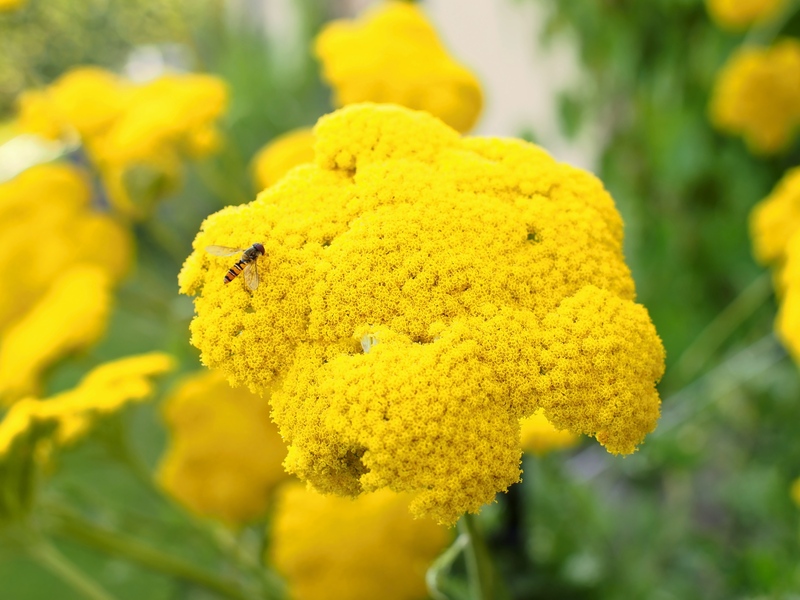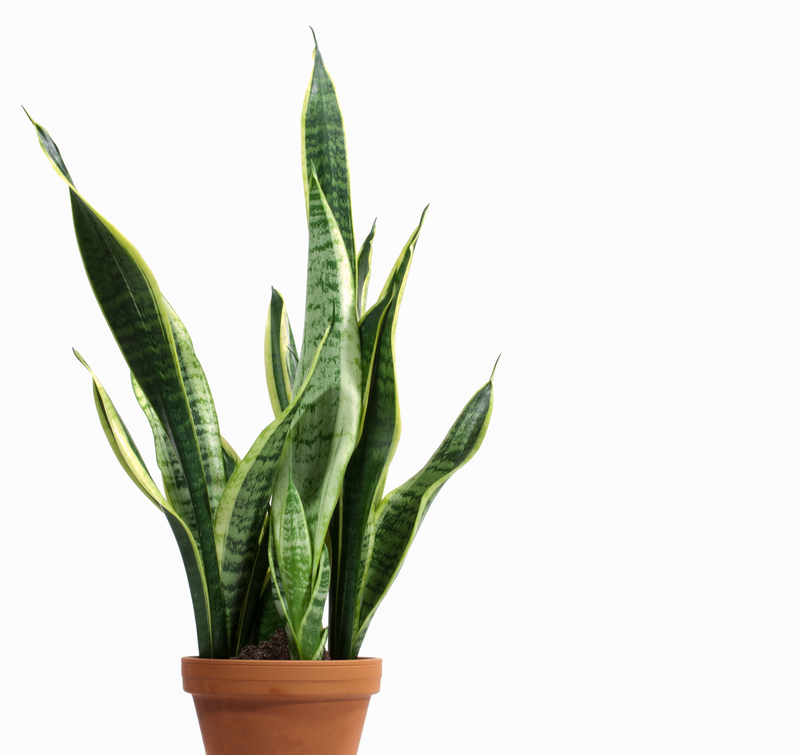Orchid Care Essentials for Enthusiasts
Posted on 20/05/2025
Orchid Care Essentials for Enthusiasts
Orchids have long enchanted plant lovers with their delicate beauty, diverse shapes, and vibrant colors. With over 25,000 documented species and close to 100,000 hybrids globally, orchids are among the most popular ornamental plants. However, the perceived "difficulty" in caring for orchids has discouraged many from adding these spectacular blooms to their homes. In reality, with knowledge and the right approach, anyone can become a thriving orchid enthusiast. In this detailed guide, we will explore all you need to know about successful orchid care essentials for enthusiasts, whether you're a novice or a seasoned collector.
Understanding Orchids: Know Your Plant
One core rule of achieving orchid care success is understanding the natural origins of your orchid. Different species have distinct requirements influenced by their native environments. Most popular houseplant orchids, such as Phalaenopsis (moth orchid), Dendrobium, Cattleya, and Oncidium, are epiphytes, which means they naturally grow on trees rather than in the ground.
Common Orchid Types for Enthusiasts
- Phalaenopsis (Moth Orchid): The easiest and most popular for beginners. Flowers can last for months.
- Dendrobium: Known for beautiful sprays of blooms, with long canes.
- Cattleya: Famous for large, fragrant flowers.
- Oncidium (Dancing Lady): Tolerates a bit more light, producing sprays of small, cheerful blooms.
- Vanda: Preferred by advanced growers; loves warmth and humidity.
Take time to identify your orchid species or hybrid; this ensures tailored care for optimal flowering and health.

Optimal Light Requirements for Orchids
Light is one of the most important essentials in orchid care. Insufficient light results in weak growth and lack of blooms, but excessive sunlight can scorch leaves.
How Much Light Do Orchids Need?
- Phalaenopsis: Low to medium, bright indirect light (east or north window or shaded south/west window).
- Dendrobium: Medium light, can tolerate some filtered morning sun.
- Cattleya: High light but never direct midday sun--west or south windows (with sheer curtains) work well.
- Oncidium: Medium to bright, tolerates more sun than Phalaenopsis.
Tip: If your orchid's leaves are dark green, it may need more light; if yellowish or reddish streaks appear, reduce exposure.
Mastering the Art of Watering Orchids
Watering is arguably the most misunderstood aspect of orchid care essentials for enthusiasts. Most orchids don't like wet roots and are prone to root rot if overwatered. Remember, it's better to under-water orchids than to over-water them.
Best Watering Practices for Healthy Orchids
- Check the potting medium: Water only when the top two inches feel dry to the touch.
- Watering frequency: Usually, once a week is sufficient for most orchids, but may be more frequent in warm/dry climates or less in cooler periods.
- How to water: Place the pot under a faucet, let water flow through the pot for 1-2 minutes, then let it drain completely.
- Avoid letting the orchid sit in water: Make sure the pot has drainage holes.
Pro Tip: Use room-temperature, non-chlorinated water when possible. Distilled, filtered, or rainwater are excellent choices for sensitive orchids.
Humidity and Airflow: Creating the Perfect Environment
Orchids thrive in environments with higher humidity and good airflow. Most home environments are too dry for many orchids, especially during winter heating.
Maintaining Proper Humidity
- Aim for relative humidity around 40-60% for most orchids.
- Place a shallow tray with water and pebbles under orchid pots (without touching the pot bottom to the water) to create localized humidity.
- Use a room humidifier if your collection is large or your home is exceptionally dry.
Ensuring Adequate Airflow
- Position orchids where there's gentle air movement, like near a ceiling fan or a slightly open window, but avoid cold drafts.
- Group plants together to help maintain a stable microclimate, but don't overcrowd them.
Choosing the Right Potting Medium and Repotting
The potting medium is critical to the health of your orchid. Unlike "regular" houseplants, orchids never grow in standard soil. Most prefer a loose, chunky mixture that closely mimics their native forest habitat. Repotting is also vital to prevent root suffocation and disease.
Popular Orchid Potting Media
- Bark Mix: The standard for Phalaenopsis and many epiphytic orchids.
- Sphagnum Moss: Retains more moisture, good for young plants or those who dry out too quickly.
- Perlite & Charcoal: Added for aeration and drainage.
- Leca or Clay Pellets: Used in semi-hydroponic setups; great for enthusiasts wanting to experiment.
When and How to Repot Orchids
- Repot every 1-2 years, or when the medium breaks down and roots become crowded or unhealthy.
- Best done after flowering and when new root growth begins.
- Gently shake off old medium, trim dead roots, and place the orchid in a slightly larger pot with fresh mix.
- Choose clear pots when possible--this helps monitor root health and mimics natural light exposure for roots.
Fertilizing Orchids: Feeding for Optimal Blooms
Orchids have modest fertilization needs, but regular, balanced feeding during the growing season (spring and summer) greatly enhances growth and flowering.
Best Fertilizers and How to Apply
- Choose a balanced 20-20-20 fertilizer or one marked specifically for orchids.
- Use at half the recommended strength to avoid salt buildup and root burn.
- Fertilize during active growth, typically every 2-4 weeks. Reduce or pause feeding in winter.
- Flush pots once a month to remove excess fertilizer salts.
Remember, "weakly, weekly" is a great orchid feeding MOTTO: dilute fertilizer more than you would for other plants and feed frequently during the growth period.
Understanding Orchid Bloom Cycles
One of the rewards of orchid care is prolific and long-lasting blooms. Understanding your orchid's bloom cycle helps set realistic expectations and guides future care.
Tips for Encouraging Re-Blooming
- After the last flower drops, some orchids (like Phalaenopsis) can re-bloom on the same spike--cut just above a node for a chance at a new flower stalk.
- Provide a slight nighttime temperature drop, especially for Phalaenopsis and Dendrobium--this helps trigger flower production.
- Resume regular feeding as new growth appears.
- Patience is key--many orchids bloom only once a year, but with proper orchid care essentials, your patience will be rewarded!
Orchid Pest and Disease Prevention
Orchids are generally hardy when grown under proper conditions, but they are susceptible to some common pests and diseases. Early intervention is crucial.
Common Orchid Pests
- Mealybugs: White, cottony insects; remove with a rubbing alcohol swab or insecticidal soap.
- Spider mites: Tiny, web-spinning pests; increase humidity and spray with miticide if necessary.
- Aphids and scale insects: Treat with neem oil or insecticidal soap.
- Slugs and snails: Hand-pick and use barriers or traps if growing outdoors.
Preventing Common Orchid Diseases
- Root rot: The result of overwatering and poor drainage--always use well-draining media and allow to dry between waterings.
- Leaf spot and fungal infections: Ensure proper air circulation and remove infected leaves promptly.
- Virus: Manifest as streaks or patterns on flowers; unfortunately, there is no cure--dispose of affected plants and sterilize tools.
Orchid Care Essentials FAQ
How often should I water my orchid?
Most orchids thrive with a weekly watering schedule, but always check the potting medium first. It should be nearly dry before watering again.
Why are my orchid's leaves turning yellow?
Yellowing leaves are often due to overwatering, poor drainage, or too much light. Adjust care as needed, and always ensure your orchid pot drains freely.
How do I get my orchid to bloom again?
After flowers fade, cut the spike just above a node, provide bright indirect light, and ensure temperature drops at night. Resume feeding during active growth for the best chance at re-blooming.
Can I grow orchids indoors?
Absolutely! Most popular orchids do very well as houseplants if provided with the right light, humidity, and airflow. Just ensure your variety is well-suited for indoor conditions.

Advanced Orchid Care Tips for Enthusiasts
For those ready to take their orchid cultivation to the next level, here are some pro-level strategies:
- Experiment with mounting: Some growers mount orchids on bark or plaques for a truly natural look.
- Grow lights: Use LED grow lights to supplement natural light, especially in low-light homes or during winter.
- Hybrid collecting: Explore the world of rare hybrids--join orchid societies and participate in plant exchanges.
- Propagation: Many orchids can be propagated by division or, in the case of Dendrobium, by keikis (baby plants).
Conclusion: Thriving as an Orchid Enthusiast
By mastering the orchid care essentials--such as understanding species, providing appropriate light, watering with care, maintaining humidity, repotting in the right medium, and preventing pests or disease--you're well on your way to growing vibrant, healthy orchids. The journey of orchid care is as rewarding as the blooms themselves. Continue learning, observe your plants carefully, and enjoy the process of nurturing these botanical treasures. Happy growing!
If you found this orchid enthusiast guide helpful, share it with fellow plant lovers and explore deeper into the world of orchid care and cultivation!



